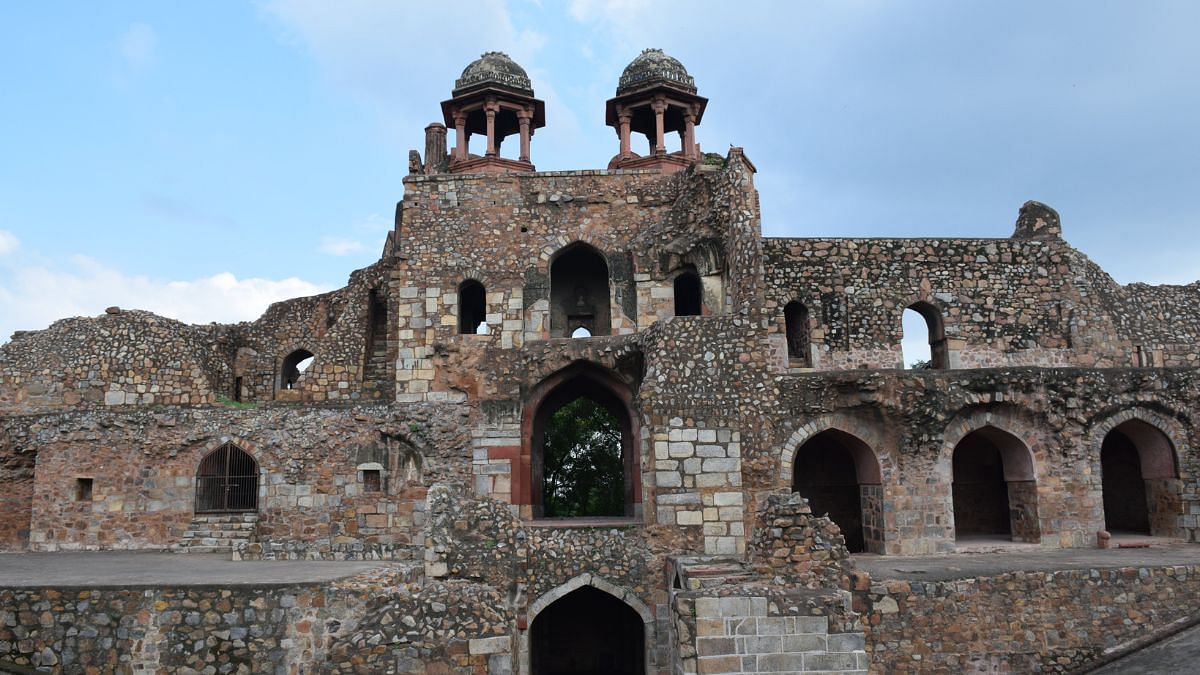Important Facts For Prelims
Purana Qila Excavation
- 02 Jun 2023
- 3 min read
Why in News?
The recent excavations by Archaeological Survey of India (ASI) at Purana Qila (Old Fort) in Delhi have revealed a continuous history spanning over 2,500 years. These excavations are aimed to establish complete chronology of the site.
- Artifacts from various historical periods have been discovered, which revealed 9 cultural levels including Pre-Mauryan, Mauryan, Sunga, Kushana, Gupta, Post Gupta, Rajput, Sultanate, and Mughal.
- The plan is to showcase the findings in an Open Air Site Museum at the fort.

What are the Findings of the Excavation?
- Shards of Painted Gray Ware Pottery:
- These pottery pieces are typically dated to the period of 1200 BC to 600 BC, indicating the existence of human settlements in the pre-Mauryan era.
- Vaikuntha Vishnu Sculpture:
- A 900-year-old sculpture of Vaikuntha Vishnu, belonging to the Rajput period, was discovered during the excavation.
- Terracotta Plaque:
- A terracotta plaque depicting the goddess Gaja Lakshmi, dating back to the Gupta period, was found at the site.
- Terracotta Ring Well:
- The remains of a well dating back 2,500 years from the Mauryan period were unearthed.
- Sunga-Kushan Period Complex:
- The excavation revealed a well-defined four-room complex from the Sunga-Kushan period, which dates back approximately 2,300 years.
- Coins, Seals, and Copper Artifacts:
- More than 136 coins, 35 seals and sealings, and other copper artifacts were discovered at the site. These findings indicate the site's significance as a center for trade activities.
What is Purana Qila?
- Purana Qila is one of the oldest forts belonging to the Mughal era and the site is identified as ancient settlement of Indraprastha (the capital of Pandavas).
- The massive gateway and walls of Purana Qila were built by Humayun in the 16th century and the foundation was laid for the new capital, Dinpanah.
- The work was carried forward by Sher Shah Suri, who displaced Humayun.
- The major attractions inside the fort are the Qila-i-Kuhna mosque of Sher Shah Suri, Sher Mandal (a tower, which is traditionally associated with the death of Humayun), a stepwell and the remains of the extensive rampart, which has three gates.
- The unique features of Indo-Islamic architecture like horseshoe-shaped arches, bracketed openings, marble inlay, carving etc are very prominent in the structure.
- The mosque has an inscription which says, 'As long as there are people on this earth, may this edifice be frequented, and people will be happy in it.'




